#秋田県
Text


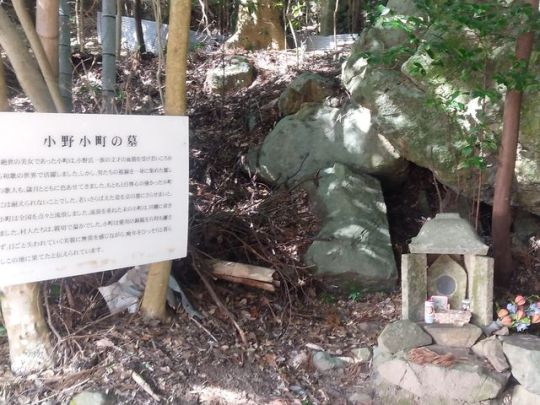
Sean bienvenidos japonsistasarqueológicos, a una nueva publicación en esta ocasión nos trasladamos a prefectura de Akita una vez más para hablar de la tumba de Ono no Komachi una vez dicho esto comenzamos.
-
Fue famosa como poeta, si no también tenía una belleza incomparable: ¡Fui a cubrir la tumba de Ono no Komachi en la ciudad de Osaki! ! La ciudad de Osaki, fue donde se refugió tras, ser expulsada del mismo, tuvo que regresar a Akita su ciudad natal. Después de eso, realizó una visita de 100 días para orar por la recuperación de su enfermedad, pero falleció el día en que se cumplió su deseo. Se dice que cuando los aldeanos la vieron, se apiadaron de ella y erigieron una lápida por su triste muerte.
-
¿Quién fue Ono no Komachi? Fue una poetisa del periodo Heian, se desconocen cuando nació y murió, pero se la conoce como "Rokukasen", se baraja la posibilidad de que viviera en Kioto, además de la prefectura de Akita, como la prefectura de Kioto y la prefectura de Kumamoto, sobre dónde se dice que nació.
-
Espero que os haya gustado y nos vemos en próximas publicaciones, ¿Conocían esta historia y a la poetisa?.
今回も秋田県に場所を移し、小野小町の墓についてお話しします。
-
歌人として有名な小野小町だが、その美しさは比類ない。大崎市にある小野小町の墓を取材した!!大崎市から追放された彼女が避難した大崎市は、故郷の秋田に帰ることになった。その後、病気の回復を祈願して百日詣りをしたが、その願いが叶った日に亡くなった。その姿を見た村人たちが憐れみ、悲しい死を悼んで墓石を建てたという。
-
小野小町とは?平安時代の歌人で、いつ生まれ、いつ亡くなったかは不明だが、「六歌仙」の名で知られ、京都のほか、秋田県、京都府、熊本県などに住んでいたと考えられている。
-
この物語と歌人をご存知でしたか?
Welcome to a new publication, this time we move to Akita prefecture once again to talk about the tomb of Ono no Komachi, so let's begin.
-
She was famous as a poet, but she also had an incomparable beauty: I went to cover the tomb of Ono no Komachi in the city of Osaki! ! Osaki City, where she took refuge after being expelled from Osaki, had to return to Akita, her hometown. After that, she made a 100-day visit to pray for recovery from her illness, but died on the day her wish came true. It is said that when the villagers saw her, they took pity on her and erected a tombstone for her sad death.
-
Who was Ono no Komachi? She was a poetess of the Heian period, it is unknown when she was born and when she died, but she is known as "Rokukasen", and it is thought that she lived in Kyoto, as well as Akita Prefecture, Kyoto Prefecture and Kumamoto Prefecture, where she is said to have been born.
-
I hope you liked it and see you in future posts. Did you know this story and the poetess?
#歴史#日本#平安時代#ユネスコ#詩#俳句#地理#文学#大崎市#小野小町古墳#小野小町#秋田県#京都府#熊本県#大平山#History#Japan#Heian Period#UNESCO#Poetry#Haiku#Geography#Literature#Osaki City#Onokomachi Tumulus#Onokomachi#Akita Prefecture#Kyoto Prefecture#Kumamoto Prefecture#Ohirayama
34 notes
·
View notes
Text

先月の秋田・岩手旅。
大好きな「地獄」。玉川温泉付近にて。
iPhone 11 pro
139 notes
·
View notes
Text

さて、ふぐすまさ帰るべが。
お昼は道の駅岩城でウミヨコ天丼。
めちゃくちゃ混んでた…… お盆休みですね。
#秋田県
#由利本荘市
#天丼
24 notes
·
View notes
Text
秋田県
Japanese Prefectures: Tohoku - Akita
都道府県 (とどうふけん) - Prefectures of Japan
Learning the kanji and a little bit about each of Japan’s 47 prefectures!
Kanji・漢字
秋 あき、シュウ autumn
田 た、デン rice field
県 ケン prefecture
東北 とうほく north-east, Tōhoku (northernmost six prefectures of Honshu)
Prefectural Capital (県庁所在地) : Akita (秋田市)
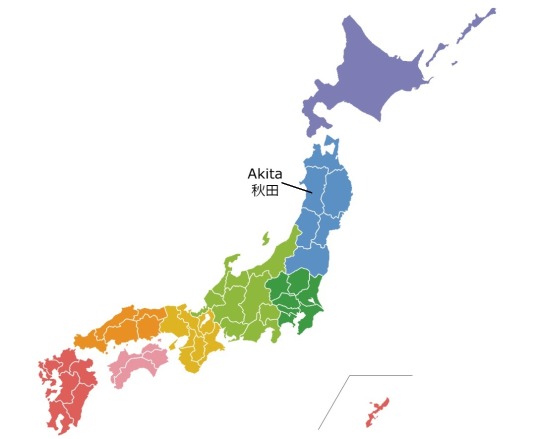
Akita prefecture is known for the natural beauty of the sea and mountains, hot springs, and the preserved samurai district in the town of Kakunodate. The capital of Akita prefecture is Akita City, and the economy of the prefecture is structured around traditional industries such as fishing and agriculture, particularly rice cultivation, as well as high-quality sake. Akita's numerous seasonal festivals offer insight into traditional culture, especially the New Year's Eve Namahage Festival of Oga, which is unique to the Oga Peninsula area of Akita prefecture. The Namahage are demon-like beings which are portrayed by men dressed as masked ogres (oni) with traditional straw capes (mino), who go door-to-door in pairs or threes and admonish children who are lazy or who have been behaving badly. They are commonly shown on TV news making children cry as they visit homes in the neighbourhood during the New Year celebrations. Other, less traumatizing, festivals include the Yokote Kamakura Festival in February, where igloo-like snow houses (kamakura) are built across the city of Yokote, inside of each of which is a snow altar to the water deity to pray for ample water; or the Tsuchizaki Shinmeisha Shrine Float Festival, where floats with warrior dolls parade around the port area of Akita City. The women of the region are also famous as 秋田美人 (Akita bijin) or "beauties of Akita" and are known for their white skin, rounded faces and high voices.
Recommended Tourist Spot・おすすめ観光スポット
Nyūtō Onsen - 乳頭温泉郷

By Bjckashiwa
Nyūtō Onsen is a traditional hot spring town in the eastern mountains of Akita. The town has six ryokan, or traditional inns, some of which date from the Edo period, and a hotel. The most famous hot springs is Tsurunoyu, which is over 300 years old, and considered to be one of the best establishments in all of Japan for a traditional and authentic onsen ryokan experience in the countryside. The onsen in the town can also be visited with general admission for those not staying in the inns. Most of the ryokan have mixed-gender onsen in addition to the male-only and female-only baths. The Yumeguri Pass can be purchased at the ryokan, allowing access to all seven of the hot springs, and a reservation at the ryokan on a shuttle bus allows for easy access to all of the onsen. Nyūtō Onsen means "nipple hot spring" referring to the shape of Mount Nyūtō nearby. The mountains and the deepest lake in Japan, Tazawako, are only a 30-minute bus ride from Nyūtō Onsen.
Regional Cuisine - 郷土料理
Kiritampo Hot Pot - きりたんぽ鍋

Photo from HIS
Kiritampo are tubes of rice mashed up into a paste, wrapped around a skewer, and grilled on an open flame. These traditional tubes of sticky rice are then placed in a nabe (hot pot) with local meats and vegetables and cooked together, creating a dish perfect for the frigid winter.
Akita Dialect・Akita-ben・秋田弁
泣く子はいねがぁ (naku ko wa ine gaa)
Standard Japanese: 泣く子はいないか (naku ko wa inai ka)
English: Is there a crybaby here?
Note: A standard line used by Namahage during the Namahage Festival
あい、しかだね (ai, shika dane)
Standard Japanese: ありゃ~、仕方ないなあ (arya, shikata nai naa)
English: Oh no, it can't be helped
Note: Said when the other person does something by accident (casual)
これをけ (kore o ke)
Standard Japanese: これを食べてください (kore o tabete kudasai)
English: Please eat this
どでした (do deshita)
Standard Japanese: びっくりした (bikkuri shita)
English: I was surprised
#japanese prefectures#日本語#japanese#japanese language#japanese langblr#langblr#studyblr#都道府県#秋田県#akita
100 notes
·
View notes
Text
夢みたい緑と白の夏景色 心も晴れて来た秋田日々

20 notes
·
View notes
Photo

おはようございます。 秋田県湯沢市川連は曇り空です。 昨日は朝一の雪投げ後、隣と斜め前と前の家も、ついでに雪投げをし朝ご飯。 朝食後テレビを見ていたら、福さんのお気に入りの番組が始まり、福さんはテレビに夢中で、家族は福さんの動きに夢中。 その後、昨年末に塗り仕上げたお椀を、漆風呂から出したり、二回目の中塗り後の水研ぎ作業やらで一日が終了。 そして今日もアレヤコレヤと有りますが、一つ一つコツコツ頑張ります。 皆様にとって今日も、良い一日と成ります様に。 https://jujiro.base.ec #秋田県 #湯沢市 #川連漆器 #川連塗 #国指定伝統的工芸品 #伝統的工芸品 #伝統工芸 #秋田工芸 #秋田クラフト #秋田の物作り #秋田の物つくり #髹漆 #寿次郎 #福 #福さん #猫の福 #漆の香りが好きな猫 #世界猫歩き #猫 #ねこ #ねこと暮らす #ねこのいる生活 #ねこのいる暮らし #水研ぎ #研磨 #kawatsura #japanlaquer #JapanTraditionalCrafts #KawatsuraLacquerwareTraditionalCrafts #jujiro (秋田・川連塗 寿次郎) https://www.instagram.com/p/CnDPAT9BNqZ/?igshid=NGJjMDIxMWI=
#秋田県#湯沢市#川連漆器#川連塗#国指定伝統的工芸品#伝統的工芸品#伝統工芸#秋田工芸#秋田クラフト#秋田の物作り#秋田の物つくり#髹漆#寿次郎#福#福さん#猫の福#漆の香りが好きな猫#世界猫歩き#猫#ねこ#ねこと暮らす#ねこのいる生活#ねこのいる暮らし#水研ぎ#研磨#kawatsura#japanlaquer#japantraditionalcrafts#kawatsuralacquerwaretraditionalcrafts#jujiro
39 notes
·
View notes
Photo

まなぐ凧 秋田県湯沢 「まなぐ」は眼の意、図案は般若 MANAGU TAKO AKITA YUZAWA big eyed kite female devil
#female devil #devil #kit e#big eyed #BEM #まなぐ凧 #秋田県 #japan #japanese kite #japanese folk art
39 notes
·
View notes
Text
good morning. This photo was taken in Akita City, Akita Prefecture.
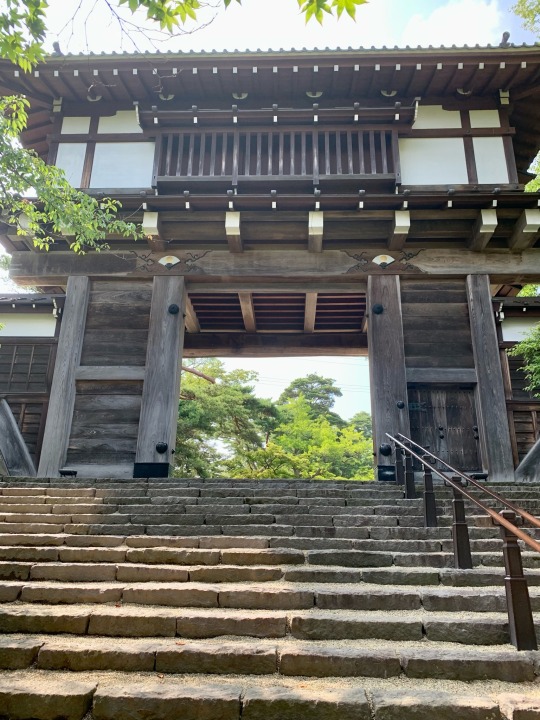
#japan#japan travel#japan trip#japanese#nature#tokyo#japan photos#japan vacation#tokyo tour#landscape#秋田県#千秋公園#秋田
8 notes
·
View notes
Photo

海鮮ばらちらし #実は珍しいオーダー #がしかも今日は立て続けに #ありがとうございます😊 #大館市 #居酒屋 #秋田県 #AKITA #Odate #Japan #NIPPON #izakaya #omakase (Restaurant Japonais Wasabi) https://www.instagram.com/p/CqSw-2iyS8h/?igshid=NGJjMDIxMWI=
10 notes
·
View notes
Photo
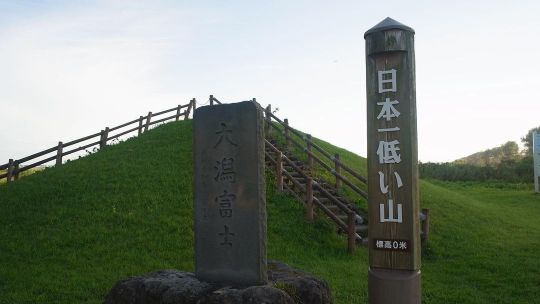
1995年に“造られた”山「大潟富士」その標高は0mで「日本一低い山」を謳っている.日本一低いところを走る県道脇にある. #秋田県 #akita #大潟村 #ogata #大潟富士 #富士山 #郷土富士 #ふるさと富士 #築山 #八郎潟 #日本一低い山 #登山 #展望 (大潟富士) https://www.instagram.com/p/CrGbO09v-En/?igshid=NGJjMDIxMWI=
9 notes
·
View notes
Text


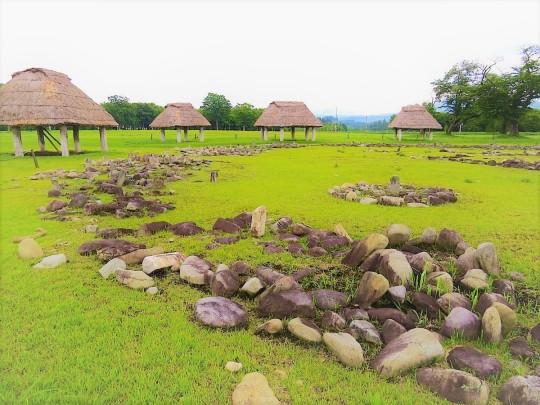


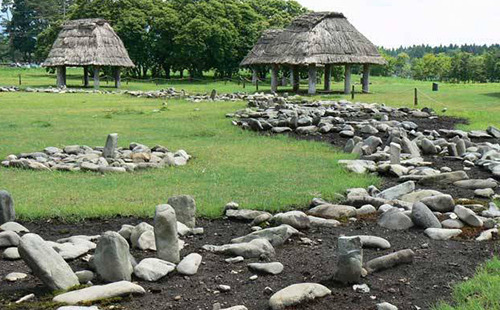
Sean bienvenidos, japonsitasarqueologícos a una nueva entrega en la que hablaremos de un Trending Topic, ya que el país del sol naciente está de moda pues le vamos a sacar beneficios y no es el único tema que están sabiendo explotar, para sacarle el mayor partido.
-
Lo que vengo a referirme, es que las modas son puro negocio, de lo más nocivo que nos podemos llevar a la cara, antes de que Japón estuviera de moda ya había muchos fakes, pero ahora se han duplicado e incluso triplicado. No hay que creerse todo lo que leamos por internet, siempre hay que cuestionarse las cosas, en este caso vamos a sentarnos, en dos monumentos uno localizado en Inglaterra y otro en japón.
-
El primero, se trata de stonehenge: Construido en el cuarto mileno 3100 antes de nuestra era, que cada vez se actualizan sus funciones la última más reciente es que no puede ser usado como un calendario solar.
El segundo, se trata de Isedōtai site, localizado en la prefectura de Akita, en la región de Tōhoku en el noroeste de Japón, construido en el quinto milenio 4000 a.c en el jomon final.
Se usó como calendario solar y posiblemente para los solsticios de verano e invierno.
-
El tema de esta publicación no es hablar de ninguno de los dos en profundidad, sino criticar a los lucidos, que sitúan stonehenge y Isedōtai site en la misma recta cronológica lo cual es una falacia por que hay por lo menos 1100 a 1500 años de diferencia aproximadamente entre ambas construcciones.
-
Ese es el problema del occidentalismo y eurocentrismo sobre todo la manía de colocarlo todo en una recta cronológica las fechas son algo aproximadas al igual que las rectas temporales.
-
Espero que os haya gustado y nos vemos en próximas publicaciones que pasen una buena semana.
Welcome, japonsitasarchaeologists, to a new edition in which we will talk about a Trending Topic, since the country of the rising sun is in fashion, we are going to make the most of it and it is not the only topic that they are knowing how to exploit, to make the most of it.
-
What I am referring to is that fashions are pure business, the most harmful thing we can take to our faces. Before Japan was in fashion there were already many fakes, but now they have doubled and even tripled. We should not believe everything we read on the internet, we should always question things, in this case we are going to sit on two monuments, one located in England and the other in Japan.
-
The first one is stonehenge: Built in the fourth millennium 3100 B.C., its functions are updated every time, the latest one is that it cannot be used as a solar calendar.
The second is the Isedōtai site, located in Akita prefecture, in the Tōhoku region of northwestern Japan, built in the fifth millennium 4000 BC in the final jomon.
It was used as a solar calendar and possibly for the summer and winter solstices.
-
The subject of this publication is not to discuss either in depth, but to criticise the lucid, who place stonehenge and Isedōtai site in the same chronological line which is a fallacy because there is at least 1100 to 1500 years difference approximately between the two constructions.
-
That is the problem of westernism and eurocentrism, especially the mania of placing everything on a chronological line, the dates are somewhat approximate, as are the time lines.
-
I hope you liked it and see you in future publications. Have a nice week.
旭日旗が流行しているので、それを最大限に利用するつもりだ。そして、彼らがそれを最大限に利用する方法を知っているのは、この話題だけではない。
私が言いたいのは、ファッションは純粋なビジネスであり、最も有害なものであるということだ。 日本が流行する前からすでに多くの偽物があったが、今では倍増し、3倍にもなっている。インターネット上の情報を鵜呑みにするのではなく、常に物事を疑ってみる必要がある。
ひとつはストーンヘンジで、紀元前3100年の第四千年紀に建てられた。
もうひとつは、東北地方の秋田県にある伊勢堂岱遺跡で、紀元前4000年、縄文末期の第5千年紀に作られた。
太陽暦として使われ、おそらく夏至と冬至にも使われた。
本書の主題は、どちらか一方を深く論じることではなく、ストーンヘンジと伊勢堂岱遺跡を同じ年代線上に置く明晰な人々を批判することである。
それが西洋主義とヨーロッパ中心主義の問題点であり、特にあらゆるものを年代順に並べようとするマニアの問題点である。
お気に召していただけたなら幸いである。 それではまた。
#japan#prehistory#archaeology#calendar#astronomy#archaeologicalremains#Isedotai#Jōmonperiod#Kitaakitacity#Akitaprefecture#Tōhokuregion#culture#Japaneseculture#unic#unesco#日本#先史時代#考古学#カレンダー#天文#遺跡#伊勢堂台#縄文時代#北秋田市#秋田県#東北地方#文化#日本文化#ユニック#ユネスコ
7 notes
·
View notes
Photo
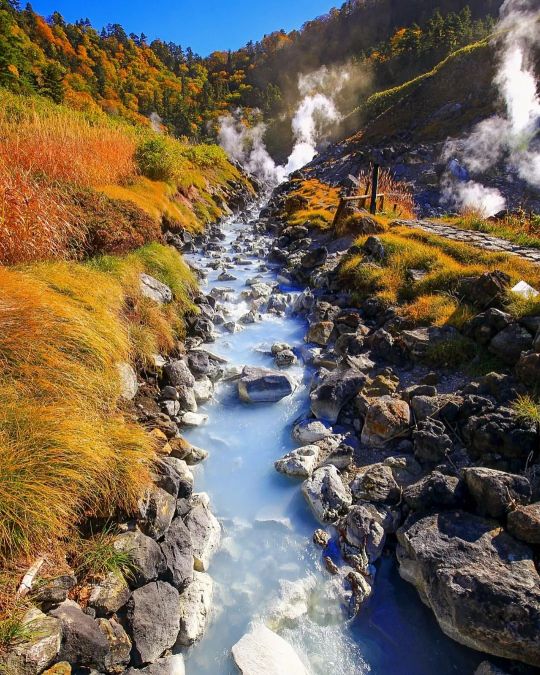
【秋田県】玉川温泉大橋 . (2020/10/21撮影) . #玉川温泉 #新玉川温泉 #玉川温泉♨️ #新玉川温泉♨️ #玉川温泉大橋 #玉川温泉自然研究路 #強酸性 #強酸性温泉 #秋田県 #秋田 #旅行 #日本旅行 #国内旅行 #旅行好き #日本の旅 (玉川温泉) https://www.instagram.com/p/CjfFJPZvgmC/?igshid=NGJjMDIxMWI=
23 notes
·
View notes
Text

今日のお昼は麺屋志乃助。
ネギ乃助にしました。
2023年77杯目。
#ラーメン
#味噌ラーメン
#秋田県
#井川町
28 notes
·
View notes
Photo

Good morning..2023.04.01 今日から新年度スタート SHOPの営業スタイルを 少し変更します。 内容は、後日お知らせいたします。 よろしくお願いいたします🐥 👖👖👖 #新年度スタート #👖👖👖 #スタンドバイミーアメカジ #スタンドバイミー #akitastandbyme #standbyme #アメカジショップ #秋田アメカジスタイル #theprivatestock #潟上市 #秋田市 #南秋田郡 #akita #秋田県 #あきた #デニムリペアショップ #denim #デニム #ユニオンスペシャル #チェーンステッチ裾上げ #usedbooks #usedfashionmagazine #usedmagazine #ファッション雑誌 #ライフスタイル雑誌 #goodmorning (Katagami-shi, Akita, Japan) https://www.instagram.com/p/Cqec7fCvGhh/?igshid=NGJjMDIxMWI=
#新年度スタート#👖👖👖#スタンドバイミーアメカジ#スタンドバイミー#akitastandbyme#standbyme#アメカジショップ#秋田アメカジスタイル#theprivatestock#潟上市#秋田市#南秋田郡#akita#秋田県#あきた#デニムリペアショップ#denim#デニム#ユニオンスペシャル#チェーンステッチ裾上げ#usedbooks#usedfashionmagazine#usedmagazine#ファッション雑誌#ライフスタイル雑誌#goodmorning
6 notes
·
View notes
Text

先月の秋田・岩手旅。
大好きな「地獄」。玉川温泉付近にて。
iPhone 11 pro
17 notes
·
View notes

